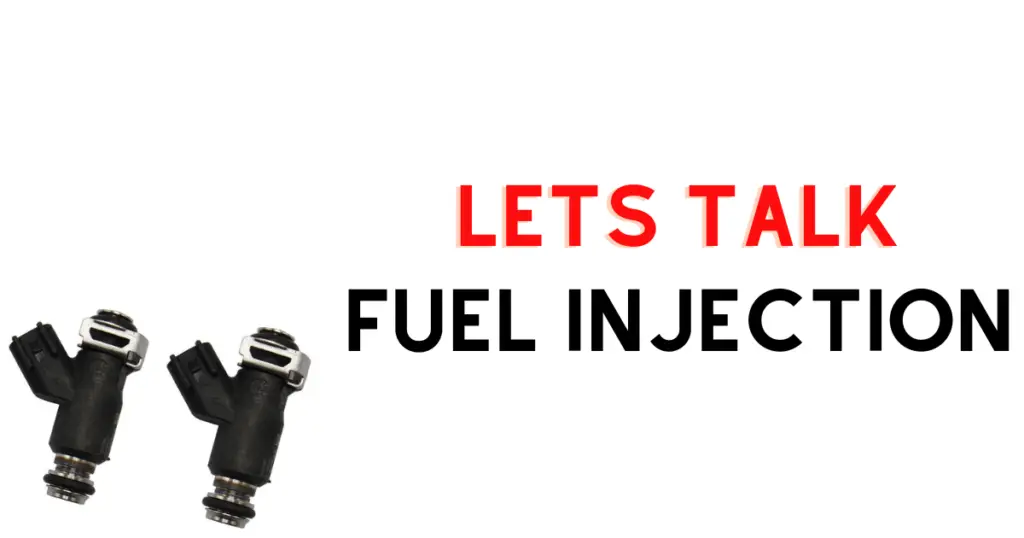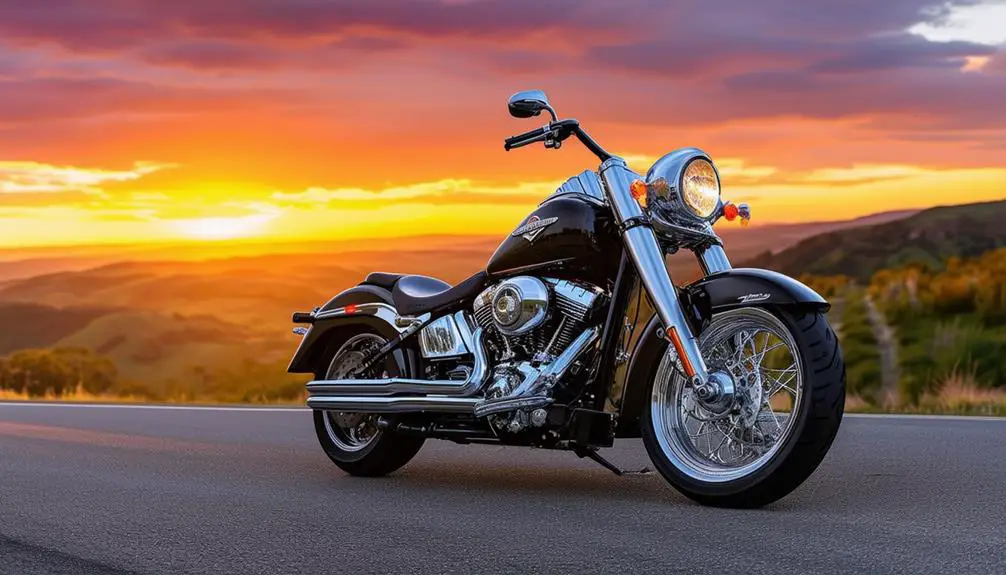When you’re cruising on your Harley Davidson, the last thing you want is your ride to be marred by a sputter or stall. While relatively uncommon, Harley Davidson fuel injection problems can be a real buzzkill, and if you own a Harley, it’s helpful to know about the intricacies of your bike’s fuel injection system. This technology has replaced the older carburetor systems in most modern motorcycles, offering more precise fuel delivery, better throttle response, and improved fuel efficiency. But, like any system, it’s not infallible and can occasionally run into problems. So what do you need to know?
Understanding the symptoms of fuel injection issues can be the key to a smoother ride and fewer headaches down the road. Some common problems you might encounter include hard starts, inconsistent idle speeds, sudden stalling, or a noticeable dip in your bike’s performance. These could stem from a variety of factors, such as a clogged fuel filter, dirty injectors, or a malfunctioning electronic control unit. Being aware of these can save you time and ensure you get the most out of your Harley’s powerful engine. But that’s not all is it?
Addressing fuel injection problems early can prevent more significant issues down the line. Regular maintenance is crucial, and it’s always good to know your way around potential fixes, whether that’s cleaning or replacing injectors, tuning your bike’s engine control unit, or simply switching out a worn fuel filter. Your Harley is more than just a motorcycle; it’s a testament to your freedom on the road, and keeping its fuel injection system in top shape means you can keep enjoying that freedom with confidence. Now, keep reading and I’ll show you everything you need to know!
Related read: Round ‘Em Up: What Year Harleys To Avoid? (Full Overview)
Understanding Harley Davidson’s Fuel Injection System

Harley Davidson motorcycles are renowned for their powerful engines, which rely on a precise fuel injection system to deliver performance. Let’s take a closer look at how this system works.
Components of the Fuel Injection System
Your Harley’s fuel injection system is a vital component of the bike’s engine. It consists primarily of:
- Injectors: They spray fuel into the engine in a fine mist.
- Fuel pump: It pressurizes fuel and sends it towards the injectors.
- Sensors: They monitor engine and air temperatures, throttle position, and other variables.
- Electronic control unit (ECU): The brain of the EFI system, it uses information from the sensors to adjust the fuel delivery.
How Fuel Injection Works in Harley Motorcycles
In a Harley motorcycle, the EFI system ensures your engine receives the right amount of fuel at the right time. When you adjust the throttle, the throttle position sensor sends a signal to the ECU, which then directs the fuel injectors to release the fuel into the air stream entering the engine. The amount of fuel injected is determined by a variety of sensor readings, ensuring efficiency and performance.
Difference Between EFI and Carburetor Systems
Electronic Fuel Injection (EFI) compared to carburetor systems provides several advantages:
- Precision: EFI can meter the exact amount of fuel regardless of conditions.
- Adaptability: EFI automatically adjusts to changes in altitude and temperatures.
- Efficiency: Typically results in better fuel economy and lower emissions.
Conversely, carburetors mix air and fuel in a simpler, less precise manner, often requiring manual adjustments for environmental changes.
Related read: Harley Davidson Fuel Pump Problems: Tips, Tricks & More
Common Harley Davidson Fuel Injection Problems and Their Associated Symptoms
Your Harley’s performance depends significantly on a properly functioning fuel injection system. Here, we will explore how to identify symptoms of fuel injection problems, effective diagnosis techniques, and understanding the relevant trouble codes.
Symptoms of Fuel Injection Issues
- Decreased Fuel Mileage: If your motorcycle is consuming more fuel than usual, this may indicate a problem with the fuel injection system.
- Fouled Spark Plugs: Fouled or dirty spark plugs can often stem from issues with the fuel injectors.
- Poor Engine Performance: You might experience hesitation, reduced power, or a rough idle if your fuel injectors are clogged or malfunctioning.
- Engine Sputtering or Stalling: These could be signs of a failing fuel pump, often associated with poor fuel injection system performance.
Diagnosing Fuel Injection Problems
To pinpoint fuel injection issues, test the following components:
- Fuel Pump: Check for a whining noise from the tank and assess pressure levels.
- Throttle Position Sensor (TPS): Incorrect TPS voltage levels can lead to idle and running issues.
- Injectors: Inspect injectors for clogs or electrical problems.
Reading Trouble Codes
When the check engine light illuminates, it’s essential to read the trouble codes using a diagnostic tool:
- Retrieve Codes: Connect a scanner to read the error codes.
- Interpret Codes: Each code will point toward a specific issue—be it with fuel volume, pressure, or injector circuitry.
By addressing the symptoms, conducting thorough diagnostics, and interpreting trouble codes accurately, you can ensure your bike’s fuel injection system is in top condition.
Quick navigation:
– 14 Years of Street Glide Problems To Be Wary Of (No, Really)
– 21 Years of Road King Problems To Be Aware Of (No, Really)
– 13 Painful Years of Harley Davidson Ultra Classic Problems
– 8 Dreaded Years of Harley Davidson Ultra Limited Problems
– 5 Years of Road Glide Problems To Be Aware Of (No, For Real)
Specific Fuel System Issues and Their Causes
When it comes to your Harley Davidson, maintaining the fuel system is crucial for smooth, powerful rides. Let’s walk through some specific areas that can cause trouble if not kept in check.
Fuel Pump Challenges
Your fuel pump is the heart of the fuel delivery system, and its failure can halt your journey. Weak fuel pressure results in poor engine performance and, in some cases, a total lack of power. It’s vital to service your fuel pump periodically—typically at 1,000, 10,000, and 20,000 miles—to keep it functioning optimally.
- Symptoms of Trouble: You might notice lower fuel economy or difficulties when starting your bike.
Injector Clogs and Failures
The injectors play an essential role by spraying fuel into the combustion chamber. However, residues or contaminants in the fuel can lead to clogs, resulting in suboptimal fuel delivery. An injector failure disrupts the precise timing and amount of fuel necessary for your engine’s performance.
- Maintenance Tip: Regular cleaning helps prevent clogs, ensuring a balanced air-fuel mix and reliable bike performance.
Fuel Filter Blockages
A clean fuel filter is your motorcycle’s defense against impurities in the fuel. Blockages can lead to reduced fuel flow, which means clogging here might starve your engine of fuel, leading to stuttering or power loss.
- Recommendation: Check and clean your fuel filter regularly as part of your maintenance routine to prevent blockages that could affect fuel pressure and engine efficiency.
content continues below
Quick Navigation for Related Problems
-
Harley Davidson Oil Leaks: Quick Fixes for a Sealed Ride
-
Harley Davidson Excessive Vibration: Tips to Smooth It Out
-
Harley Engine Knocking Sound: Causes and Fixes
-
4 Most Annoying Harley Davidson Throttle by Wire Problems
-
5 Harley Davidson Overheating Problems That Ruin Your Ride
-
3 Harley Davidson Brake Light Switch Problems To Be Aware Of
-
Total Harley Davidson Starter Problems Troubleshooting Guide
-
Harley Davidson Speedometer Not Working: Tips, Tricks & More
-
Harley Oil Breather Problems: Quick Tips, Tricks & More
-
Harley Oil Sumping Fix: Quick Solutions for a Smooth Ride
-
Harley Davidson ABS Light Flashing: Tips, Fixes, and More
-
Harley Davidson BCM Problems: Navigating Common Issues
-
Is Your Harley Clicking When Trying to Start? Help’s Here!
-
Harley Davidson Fuel Pump Problems: Tips, Tricks & More
-
3 Harley Davidson Fuel Injection Problems To Be Wary Of
-
Harley Bad Compensator Symptoms: Recognizing Early Signs
-
6 Reasons Why Your Harley Has Power but Won’t Start
-
Your Harley Lost All Electrical Power? Here’s What To Do
-
3 Harley Davidson Transmission Problems That Shift Your Mood
-
4 Harley Hydraulic Clutch Problems, Their Causes and Fixes
content resumes
Troubleshooting and Repair Steps
In this section, you’ll learn specific strategies for addressing Harley Davidson fuel injection problems, pinpoint when it’s time to consult with a professional, and understand the tools needed for repair and diagnosis. Let’s get to work ensuring your ride performs at its best.
DIY Fixes for Injection Problems
Fuel injection issues can often be resolved with a little know-how and the right approach. For instance:
- Check for Electrical Issues: Ensure all connections to the fuel injector are secure. A loose wire can lead to inconsistent fuel delivery.
- Clean Your Fuel Injectors: Sometimes, the solution is as simple as using a fuel injector cleaning solution to remove debris and build-up from the injectors.
Use a fuel pressure test to assess the health of your fuel pump. If the pressure is low, it may indicate a need to replace your fuel pump.
When to Seek Professional Help
If your problems persist after basic fixes, here’s when to reach out for help:
- Complex Electrical Problems: If you suspect a more intricate electrical issue, it’s safer to consult a professional mechanic to avoid further damage.
- Persistent Low Fuel Pressure: Should your fuel pressure test indicate ongoing issues, a professional can accurately diagnose and fix problems within the fuel rail or related components.
Tools and Equipment for Repair and Diagnosis
For the times you opt to tackle issues yourself, ensure you have these tools on hand:
- Diagnostic Tools: A proper scan tool tailored to your Harley can pinpoint errors without guesswork.
- Pressure Gauge: Essential for conducting a fuel pressure test, a reliable pressure gauge can help you determine if the fuel pump is performing correctly.
Remember, if you feel out of your depth or if the repair requires tools and expertise beyond your scope, visit your local dealer for support.
Recommended Maintenance and Prevention Practices
Keeping your Harley Davidson’s fuel injection system in top-notch condition is essential for optimum performance and fuel economy. Regular maintenance, using injector cleaners, and replacing worn-out components can prevent most problems before they start.
Regular Maintenance for Injection Systems
Your Harley’s fuel injection system demands consistent attention. Stick to the maintenance schedules, ideally checking at 1,000, 10,000, and 20,000 miles. This should include:
- Inspecting and cleaning the fuel filter to avoid clogs.
- Ensuring the fuel injectors are clean for the best fuel economy.
Using Injector Cleaners
To help maintain injector cleanliness:
- Use a quality injector cleaner every few fill-ups.
- Follow the cleaner manufacturer’s instructions to avoid overuse which could damage your fuel system components.
A clean injector system means smoother rides and better overall engine function.
Replacing Components as Preventative Measures
Replacing certain components can be a preemptive strike against future issues.
- Fuel filters should be replaced as recommended or if you suspect clogging.
- Consider replacing fuel injectors if you notice irregular engine performance or if they have been in use for an extended period.
Taking preventative steps can save you both time and money, avoiding costly repairs down the road.
Electrical Aspects of Harley Fuel Injection Systems
Your Harley Davidson’s fuel injection system relies heavily on electrical components. The proper functioning of sensors, wiring, and connectors is crucial for the optimal performance of your motorcycle.
Electrical Issues and Their Effect on Fuel Injection
Sensors: Like any modern fuel injection system, your Harley’s engine management depends on various sensors to monitor operating conditions. These sensors, including the Manifold Absolute Pressure (MAP) sensor and the Throttle Position Sensor (TPS), send critical data to the Electronic Control Module (ECM). If a sensor provides incorrect information due to an electrical fault, the fuel-to-air ratio can become imbalanced, affecting performance and efficiency. Regular checks of your sensors are advisable to prevent such issues.
Wiring: The wiring harness that connects these sensors to the ECM is another potential source of trouble. If you observe intermittent problems or random changes in the behavior of your engine, you may have damaged or corroded wiring. Inspect your wiring for any signs of wear, and ensure all connectors are tight and corrosion-free.
Battery and Fuses: A weak or failing battery can lead to poor performance of the fuel injection system. Your bike’s ability to start and run smoothly often depends on a strong battery connection. Similarly, fuses are critical in protecting the electrical circuitry; a blown fuse can result in a non-operational fuel injection system. Always check your battery’s charge and inspect fuses if you experience electrical issues.
Extracting Diagnostic Information from Electrical Components
When you encounter a problem with your fuel injection system, the electrical components can often tell the story. Modern Harley Davidson motorcycles come equipped with an onboard diagnostic system. You can extract diagnostic codes from the ECM using a scan tool or a series of manual techniques.
- Connectors: Ensure connectors to the ECM are secure when troubleshooting, as loose connections can lead to misleading diagnostic information.
- Diagnostic Codes: Pay close attention to codes that indicate faults with the sensors or battery, as these will often lead you to the root cause of your fuel injection issues.
By remaining vigilant about the state of your bike’s electrical system, you can prevent many common issues from escalating. Regular maintenance and a bit of electrical savvy can go a long way in keeping your Harley running smoothly.
Frequently Asked Questions
In this section, we address common questions specific to Harley-Davidson fuel injection issues that you might encounter, offering targeted advice to help you get back on the road smoothly.
What steps can I take to diagnose fuel injection issues on a Harley-Davidson?
To diagnose fuel injection problems on your Harley-Davidson, start by checking for any trouble codes in the motorcycle’s computer system. You should also inspect the fuel filter and pump for signs of clogging or wear.
How can I resolve starting problems linked to fuel injection on my Harley?
Starting issues linked to fuel injection on your Harley can often be resolved by ensuring your fuel injectors are clean and not clogged. Regular maintenance, such as replacing the fuel filter and checking the fuel pressure, can also help.
Are there common symptoms that indicate fuel injector failure on a Harley-Davidson?
Yes, common symptoms of fuel injector failure on a Harley-Davidson include a loss of engine power, rough engine idling, and problems starting the bike. In some cases, you might notice a fuel odor or engine misfires.
Can a failing fuel injector cause performance issues on a Harley-Davidson?
Absolutely, a failing fuel injector can cause various performance issues on your Harley-Davidson, such as decreased power, increased fuel consumption, and intermittent throttle response.







Leave a Reply
You must be logged in to post a comment.